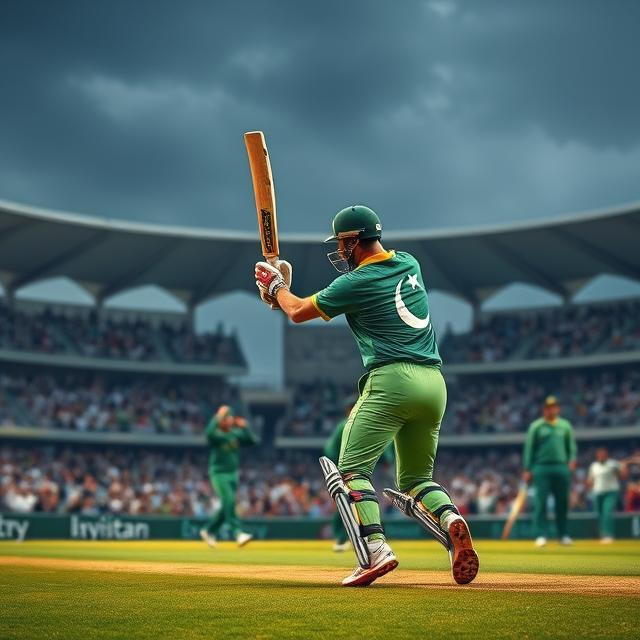Pakistan Cricket: Same Action, Different Outcomes? A Deep Dive into Player Controversy

Pakistan Cricket: Same Action, Different Outcomes? A Deep Dive into Player Controversy
Pakistan cricket, a nation steeped in passion and a proud history, has faced its share of controversies. One particular issue that has simmered beneath the surface for years is the alleged use of similar batting actions by multiple players. This article meticulously examines the accusations, explores the implications, and investigates the response (or lack thereof) from the cricketing authorities.
The sight of identical batting techniques across different players isn’t inherently suspicious. Cricket, like many sports, has seen players inspired by and learning from others. Yet, in the context of Pakistan cricket, where allegations of match-fixing have unfortunately cast a shadow, the debate becomes significantly more sensitive.
The Uncomfortable Parallels
The common denominator in these controversies often lies in the striking similarity of the batting stances, footwork, and the very sequence of strokes utilized by the players under scrutiny. This shared resemblance has inevitably triggered speculation, leading to accusations of coordinated actions or, even worse, match-fixing.
While mere similarity doesn’t inherently prove wrongdoing, it undoubtedly creates a breeding ground for doubt and erodes the trust that fans, commentators, and the authorities themselves need for a level playing field. The scrutiny extends beyond the players’ individual skills and into the arena of ethical conduct within the Pakistan cricket team.
The Debate: Fair Play versus Suspicion
The debate over the alleged “same action” hinges on a complex interplay between fair play and the ever-present shadow of suspicion. Cricket is a game built on the principle of individual skill and athleticism. But when repeated instances of suspiciously similar techniques arise, it inevitably raises questions about the authenticity of the players’ individual talents.
Is it simply a case of players unintentionally adopting similar approaches, or is there a deeper, more coordinated element at play? Fans and commentators want answers, yet the cricket authorities often struggle to provide definitive evidence. This leaves an uncomfortable space, where suspicions linger and trust is fractured.
The Role of Cricket Authorities
One of the most crucial aspects of this issue is the role of the cricket authorities, particularly the Pakistan Cricket Board (PCB). Their response, or lack thereof, often plays a significant part in shaping public perception and fueling controversies. A swift, impartial, and transparent investigation is essential to quell suspicions and reaffirm the integrity of the game.
Transparency becomes paramount. When players are accused, the PCB’s investigation procedures need to be meticulously documented and made accessible to the public. Clear guidelines, robust processes, and independent tribunals can significantly boost credibility. It also encourages the players involved to cooperate fully with the inquiries.
Beyond the Batting Action: Other Factors
The criticism surrounding “same action” in Pakistan cricket doesn’t solely focus on batting techniques. It expands to encompass a broader spectrum of concerns, including:
- Coaching Practices: Are players being coached to mirror specific techniques? Is there a risk of standardized coaching practices potentially leading to similar actions?
- Training Environments: Are there training setups that inadvertently encourage the adoption of similar approaches?
- Team Dynamics: Does the team culture inadvertently foster the emulation of particular styles by players?
The Need for a Comprehensive Approach
Addressing this multifaceted issue requires a comprehensive approach. It cannot be simply dismissed as a superficial matter; instead, a thorough examination of all potential factors is crucial.
The PCB, in conjunction with international cricketing bodies, needs to proactively address these concerns. Investing in improved training methodologies, introducing standardized coaching guidelines, and implementing transparent investigation protocols is crucial. This holistic approach will not only dispel suspicions but also reinforce the integrity of the game.
The Psychological Impact on Players
The constant scrutiny surrounding the alleged “same action” can have a profound impact on the players’ well-being. They are subjected to intense media pressure, public criticism, and the weight of accusations, which can negatively affect their performance and mental health.
The psychological toll of these controversies is often overlooked in the discussion of cricketing integrity. Maintaining a focus on player well-being is as critical as ensuring fair play.
Looking Ahead
The issue of similar batting actions in Pakistan cricket is a complex and sensitive one. The controversy underscores the need for heightened awareness, rigorous investigation procedures, and improved transparency. Ultimately, maintaining the integrity of the sport requires a multifaceted approach that addresses the concerns of all stakeholders—players, fans, and the governing bodies.
A concerted effort from the PCB, coupled with a commitment from the players to ethical conduct, is essential in dismantling the shadow of suspicion and restoring trust in Pakistani cricket. Only through unwavering dedication and a willingness to confront this challenge head-on can Pakistan cricket reclaim its rightful place as a respected and trustworthy force in the global cricketing community.
The Importance of Evidence
It is essential that all investigations into these allegations are conducted with the highest standards of journalistic integrity. This involves verifying claims with concrete evidence and corroborating accounts from multiple sources. The aim should be to uncover the truth rather than to sensationalize suspicions. Building on such a foundation of evidence will help establish a trustful environment in the sport.
Disclaimer: This article is intended for educational and informational purposes only. It does not constitute legal or professional advice.